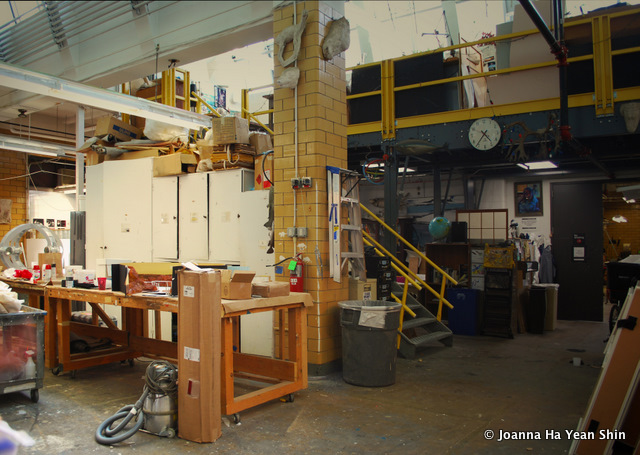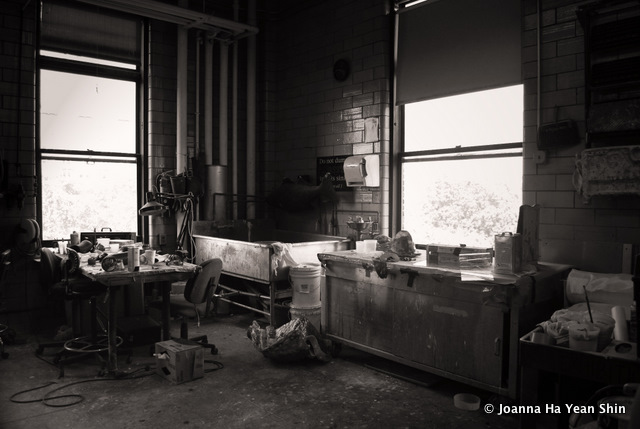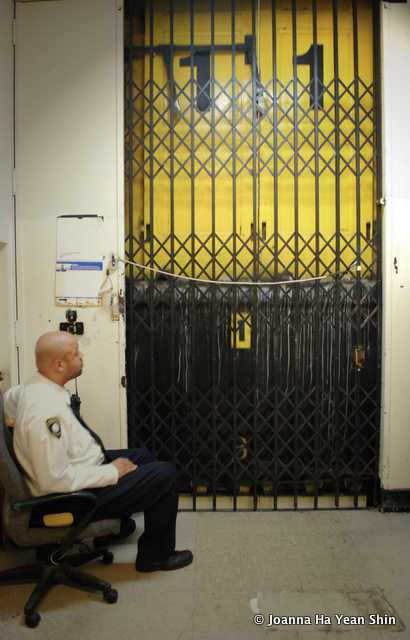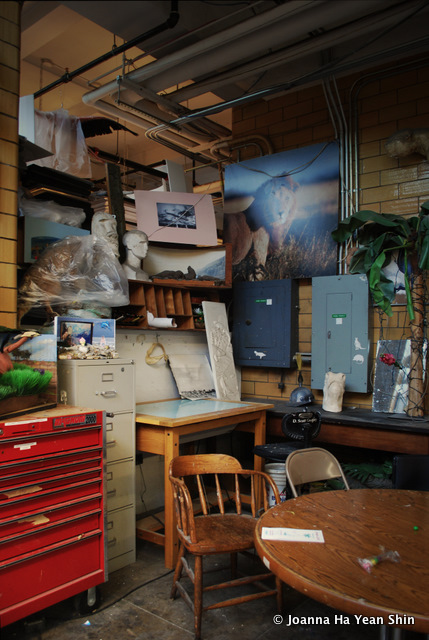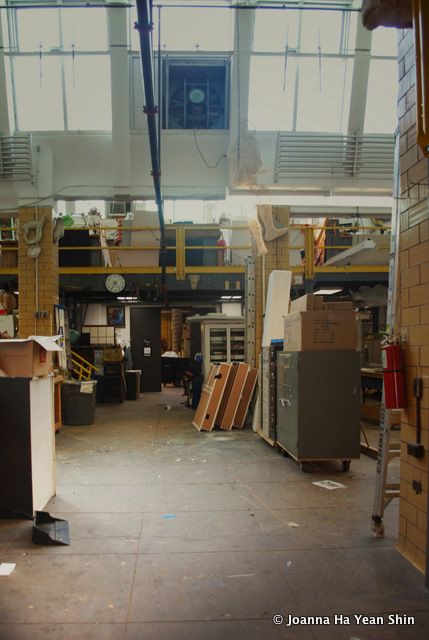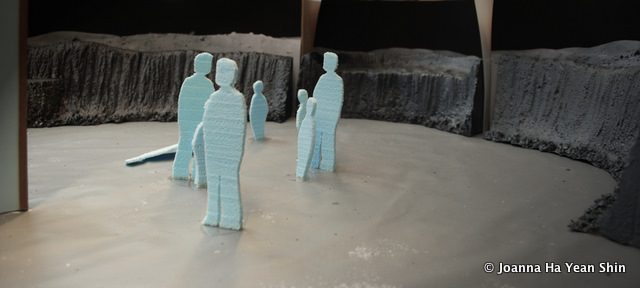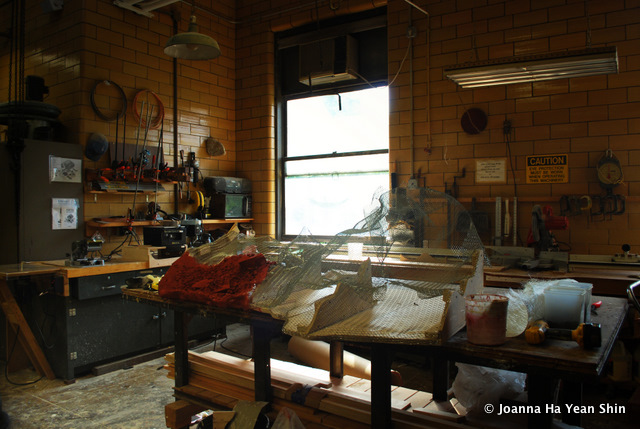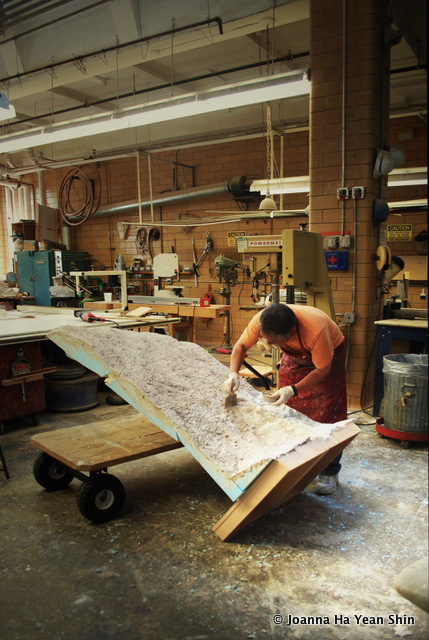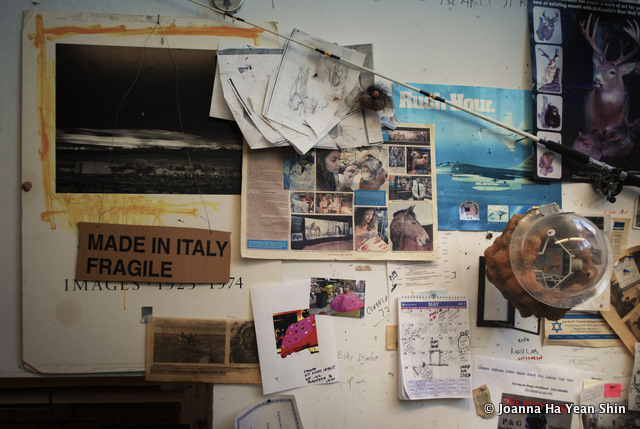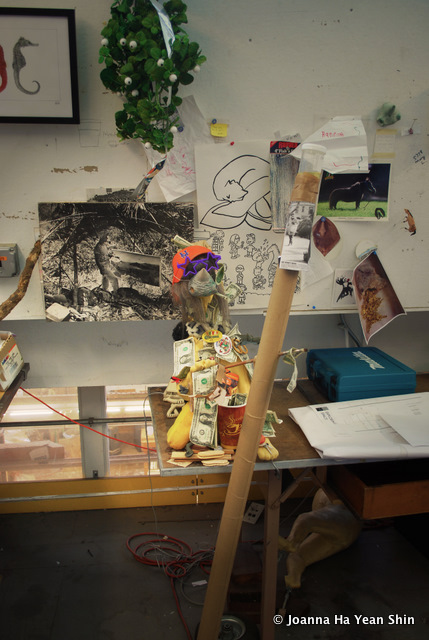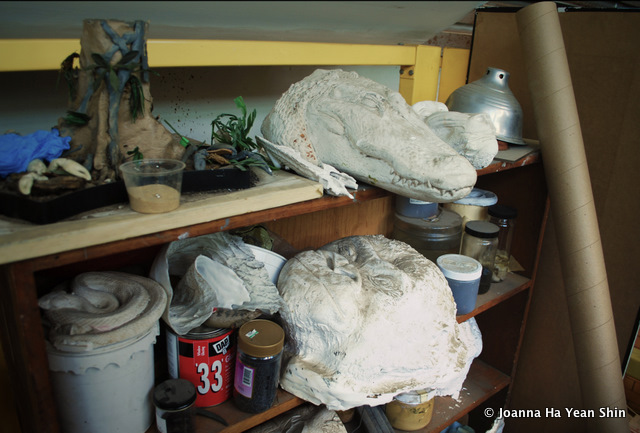“I’ve been wanting to work here since I was 3 years old,” says Jake Cesareo, an artist at the American Museum of Natural History, who you may have also seen riding his oversized cupcake around town. We met him in front of the Hayden Planetarium and followed him into the largest elevator we have ever seen. “5th floor, penthouse,” he tells the elevator operator and we head up to the studios where all of the dinosaurs, animals and space recreations come to life. The workshop has been in operation since the 1920s and old photographs of what it once looked like are displayed here and there amidst the wonderful chaos of collected objects.
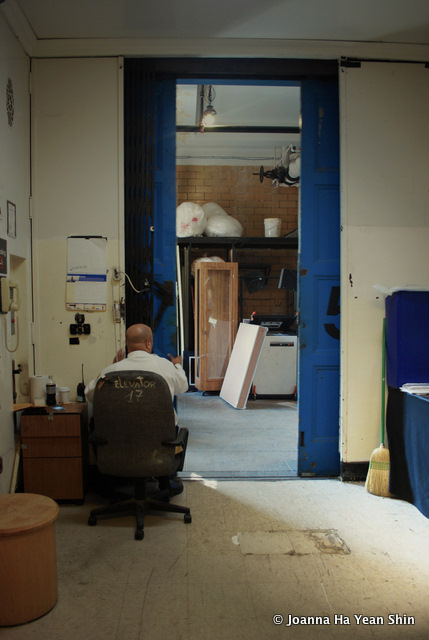 The side panels of the freight elevator expand out for even greater loading capacity
The side panels of the freight elevator expand out for even greater loading capacity
With the energy of a child, Jack introduced us to the family of artists working there, telling us about each of their talents and their quirky extra-curricular abilities, such as the artist who was working on her bike and another who was creatively fixing his ID tag. Jack (jokingly) told us that he spends his evenings in a display case, a reversal of Night at the Museum. As we walk by the workspaces, heads pop up out of nowhere to say hello. There are 13 full time staff artists, joined by temps, interns and freelancers as the need arises.
Right now, they’re working on creating Mars for an upcoming exhibit. There are miniature models of the entire set. One artist was working on a ¼ scale Japanese space-craft while others were working on full-size mockups of the planet. Jack says he “learned so much by being here” for the last fifteen years, and from the range of materials and equipment, it’s clearly a well-oiled machine. Jack says it’s “more of a science, less of an art,” and he had to adjust his fine arts training when he started to work here. To build Mars, he’s using a combination of metal mash, aqua resin, fiberglass, paint, wood and staples. Still he says humbly, “lighting is everything,” and the models even include working miniature theater lights.
The studio has a well-worn industrial feeling, with quirky nicknacks amassed over time in a collage of lived spaces. There’s a treasured bottle of honey in the shape of a bear, an eclectic shrine, old notebooks, a fish tank filled with vegetation (they aren’t sure what lives in it anymore), and leftover pieces of past installations–including the enormous neck of a dinosaur. The museum installations are usually modular, customizable to fit into other spaces when the exhibit travels. This alternate dinosaur neck was made for places where the ceilings aren’t as high as the Museum of Natural History.
There’s a well-lit loft area, reminiscent of an architectural studio, where the artists have their desks:
The artists also have access to the roof from their studio, where they manage a garden and grill their lunch to the backdrop of the Upper West Side skyline. Like the studio below, there are remnants up there–a leftover science experiment about water collection, an old, decaying office chair.
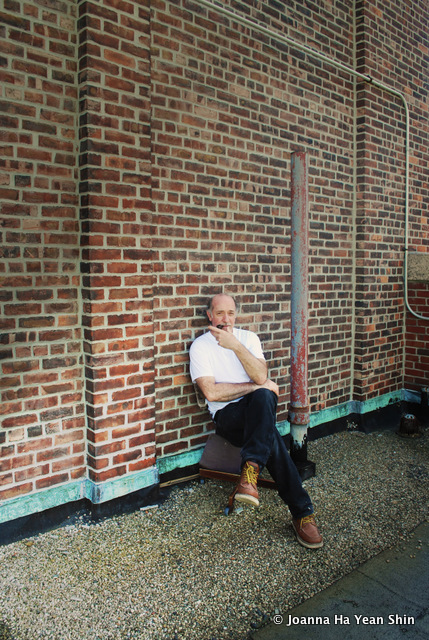 Jack on the roof of the museum
Jack on the roof of the museum
Later Jack took us to see some of the other behind-the-scenes areas of the museum, including one of the longest hallways in New York City–stretching from Columbus Avenue to Central Park West–and we ended up in the exotic frog exhibit, where Jack had created the trees.
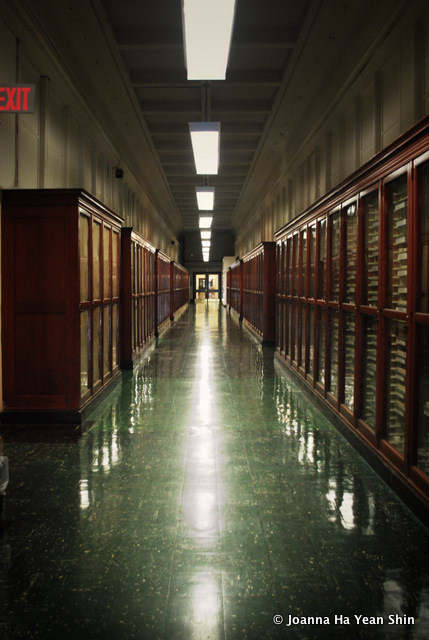 The hallways continues way beyond the double doors
The hallways continues way beyond the double doors
I remember the sense of wonder going to this museum as a child, and the studio space is truly a wonderful factory of invention. And with artists like Jack, whose enthusiasm, creativity and inner youth are so passionately visible–I am sure generations of children will continue to pass through this museum, inspired and awed. This crate was being sent to NASA Headquarters–you better believe it!
The American Museum of Natural History
Central Park West at 79th Street
Buy tickets online to the American Museum of Natural History and save up to 20%
Special thanks to Jack Cesareo, Joanna Ha Yean Shin and the staff at the museum.






